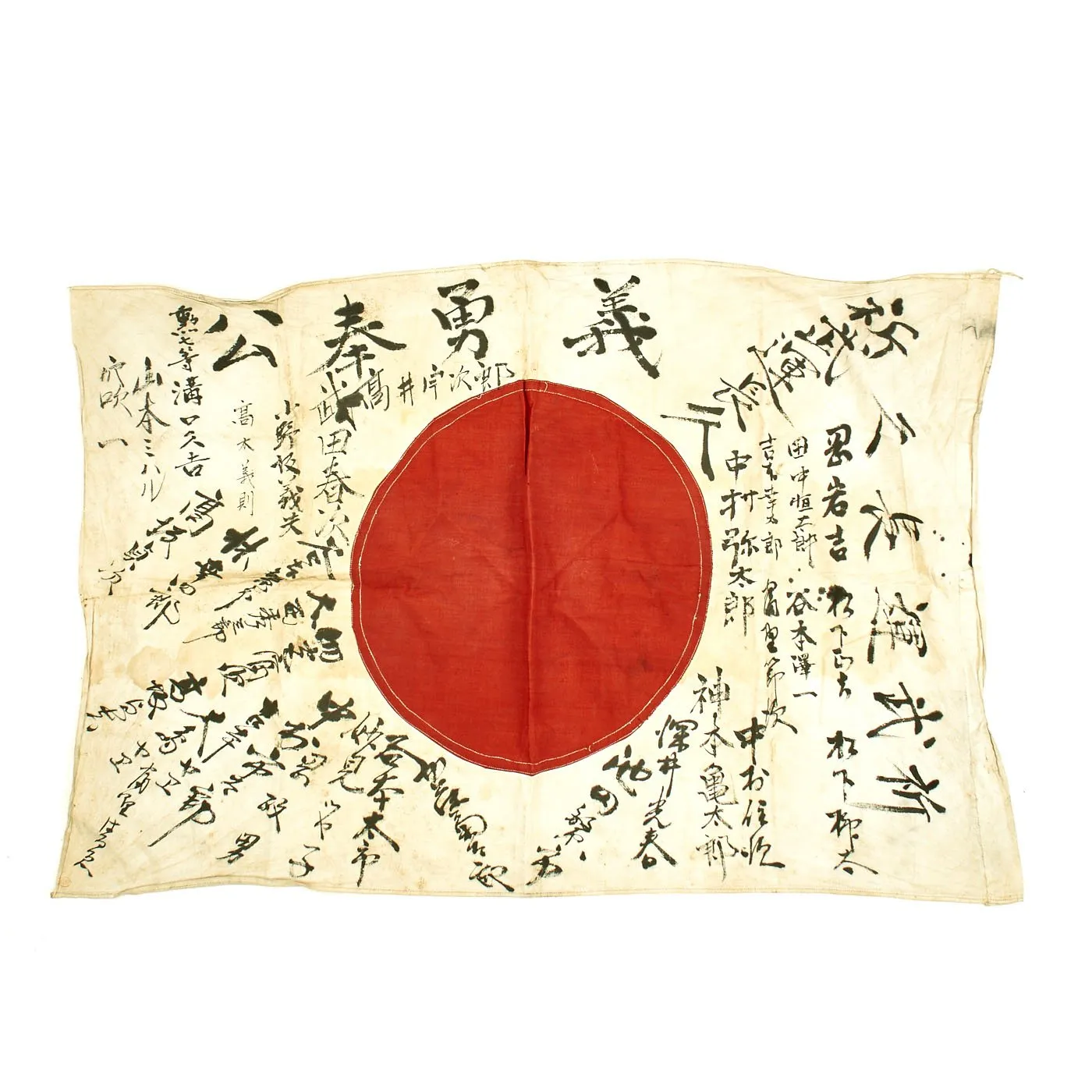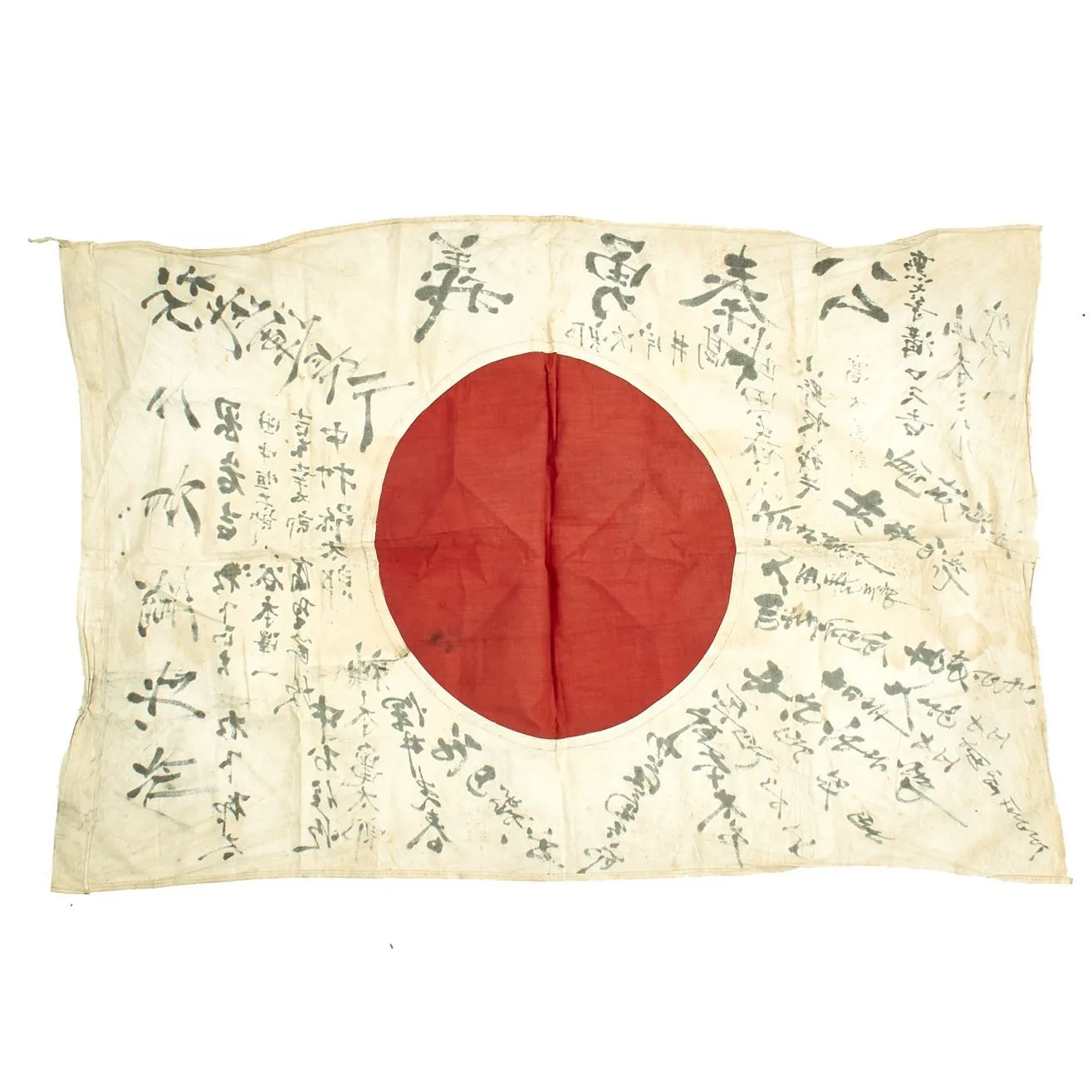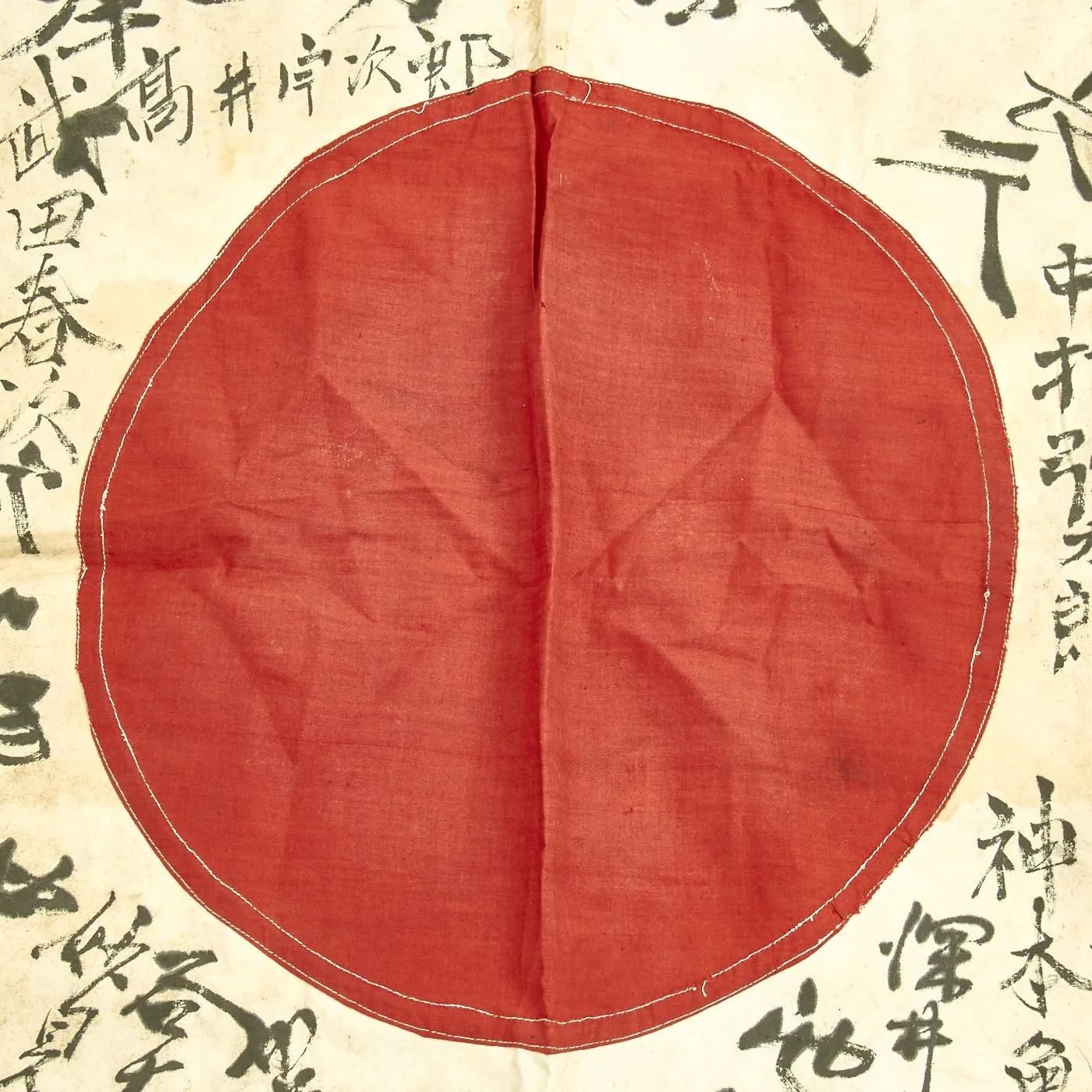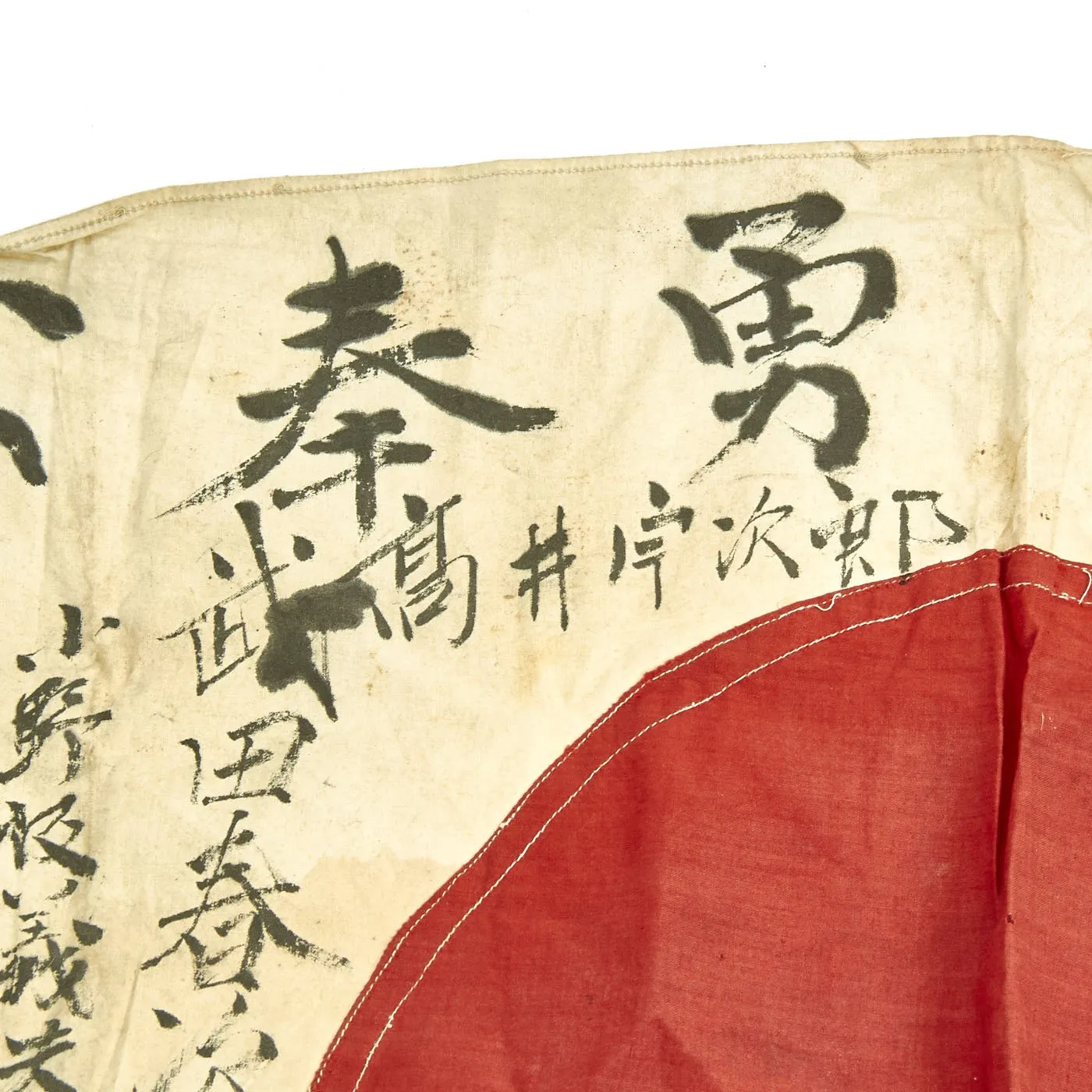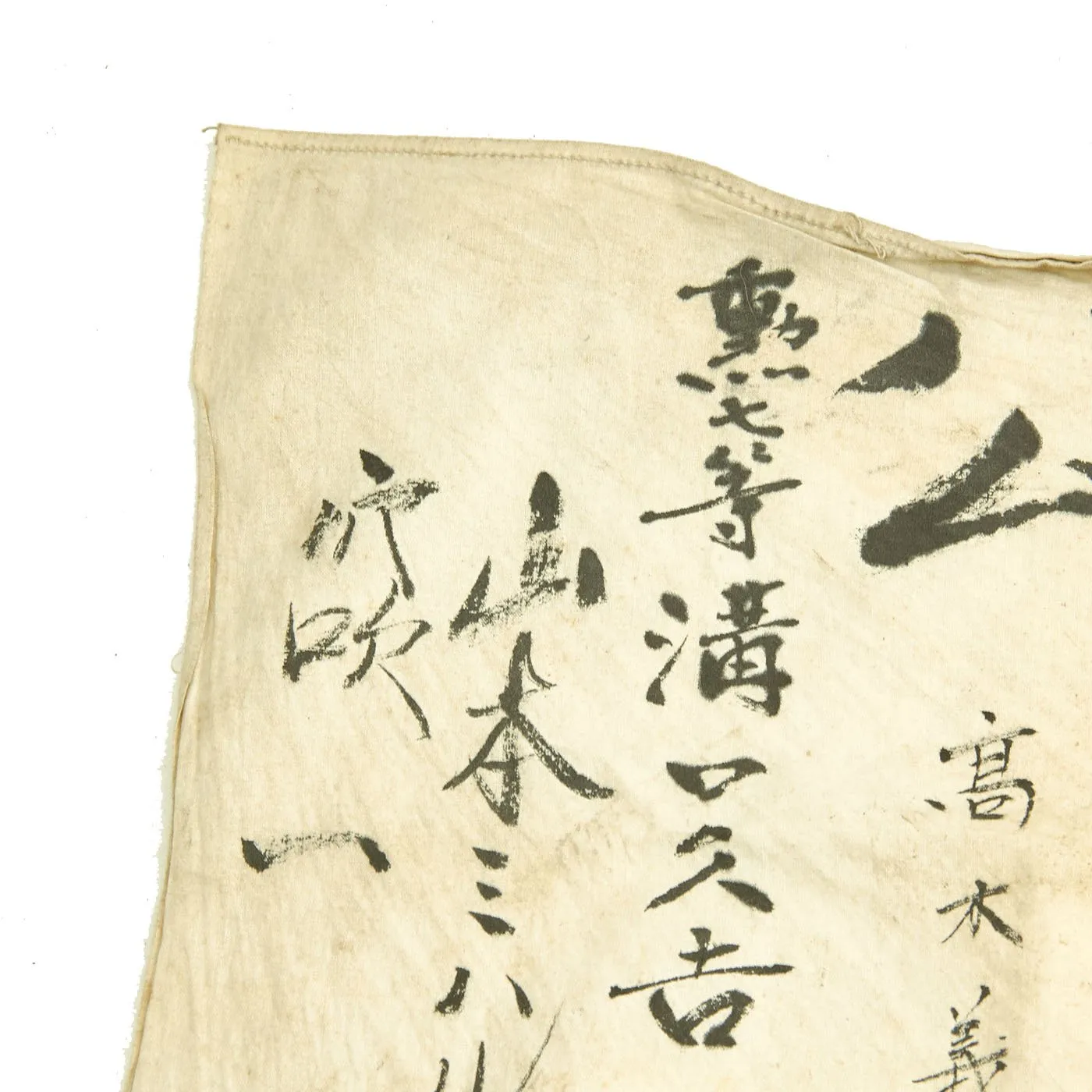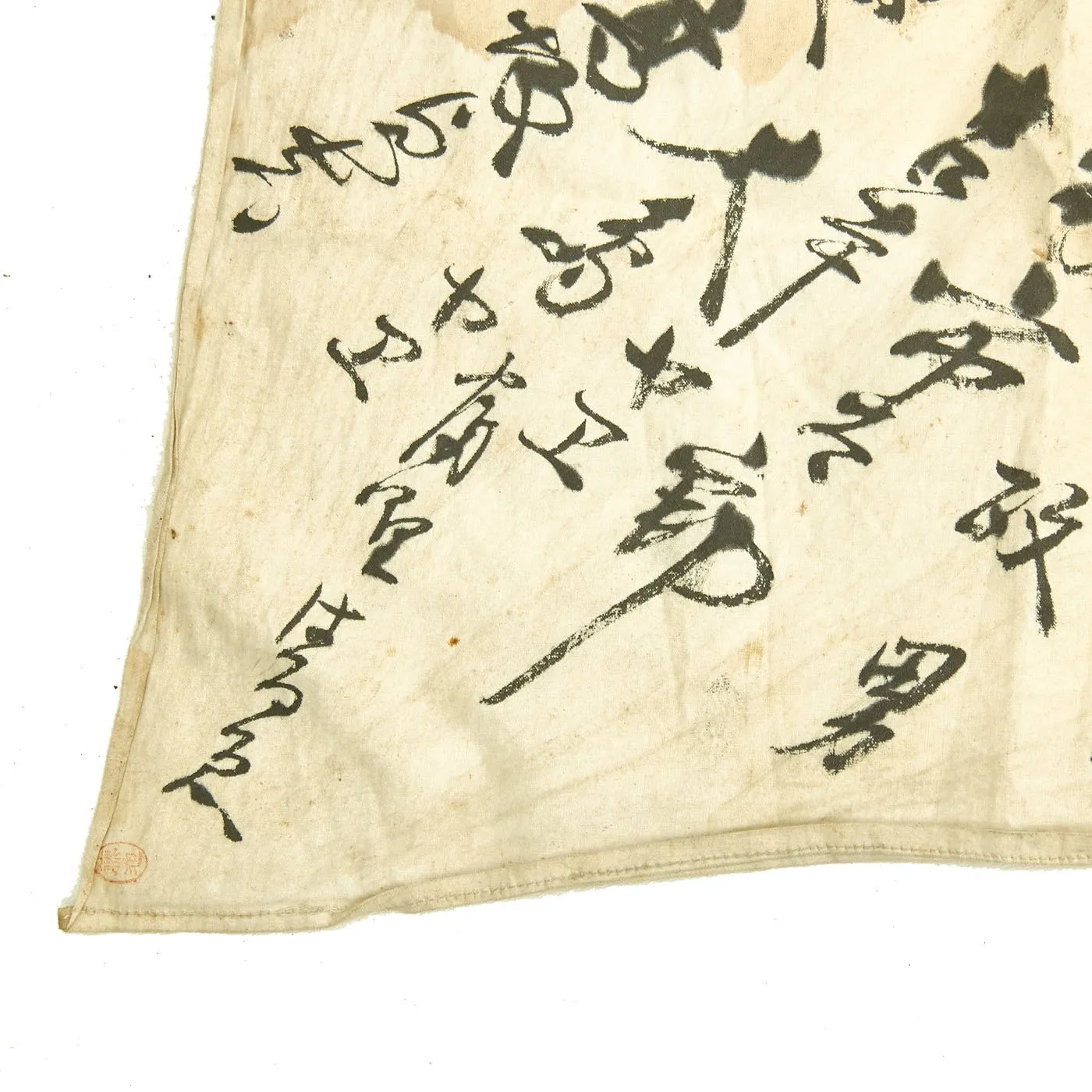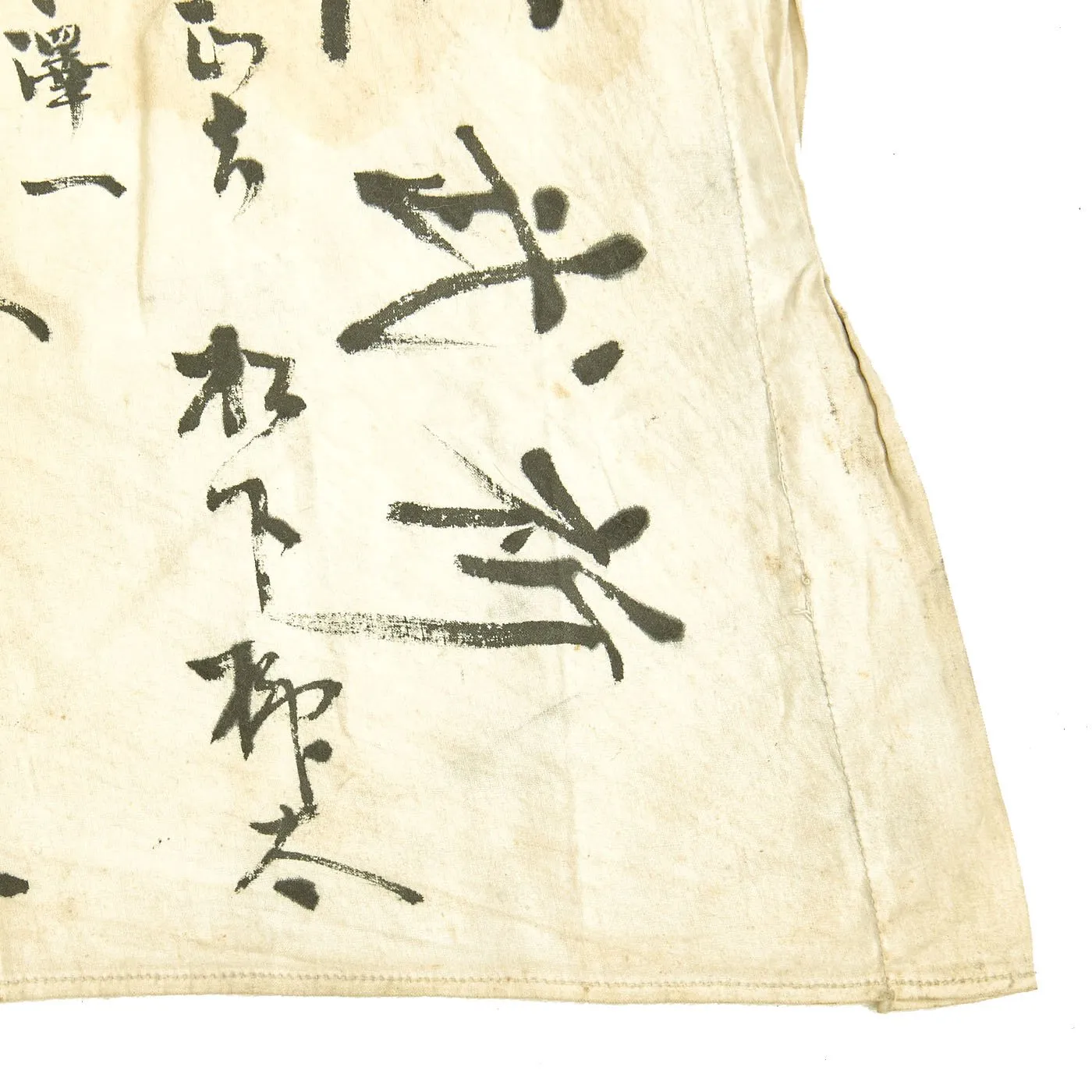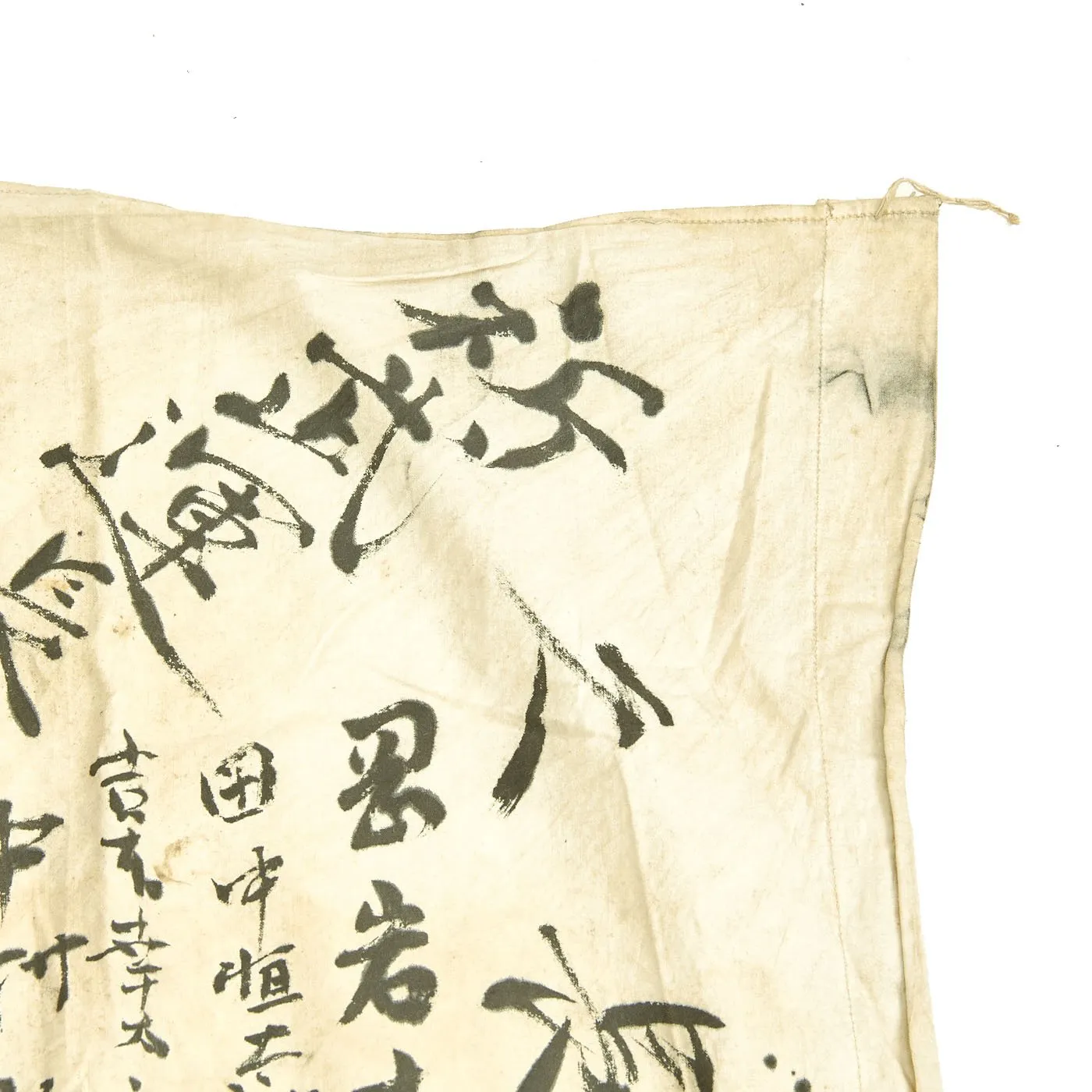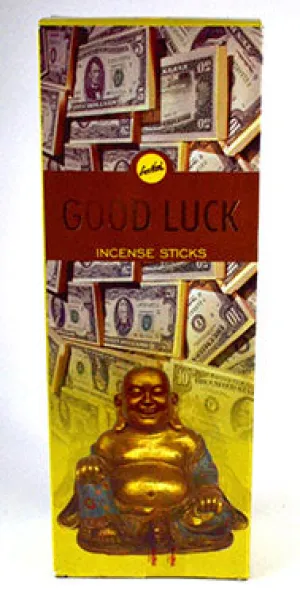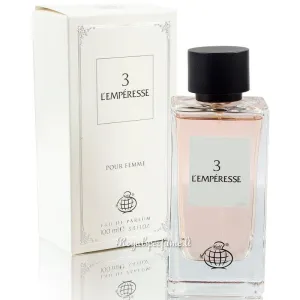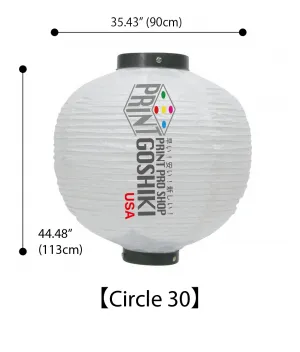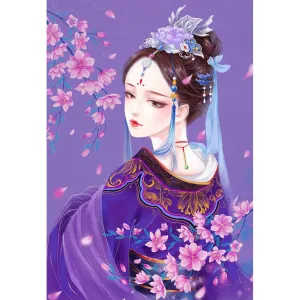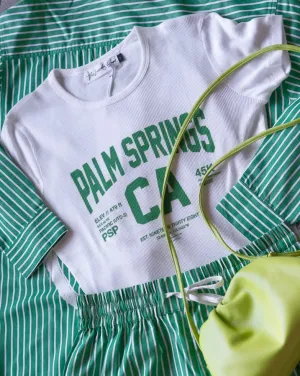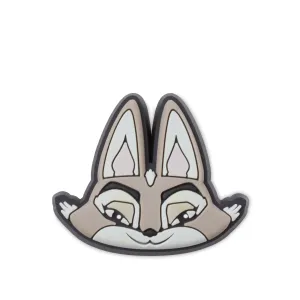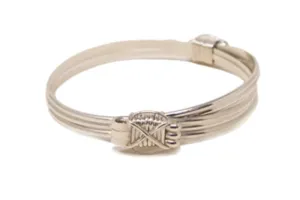Product Details
+Original Item: One-of-a-kind. Just purchased from a large military auction. This hand painted cloth flag is marked with battle quotes such as "Banzai", and "Good Luck". As with many good luck flags, the flag is marked on across the right hand side (written sideways) with the Japanese phrase 久長 運 武, which reads Bu un Chou kyu ("May your military fortunes be long lasting."). To the right of these is the character 祈, which means "Prayer", so this particular flag is praying for good luck in battle.
It is also signed with the names of many friends and family, some radiating out from the enter. The flag measures approximately 23" x 35", and is made of what appears to be cotton or linen cloth, with the red "sun" a separate piece of cloth sewn into the middle. Flag is in very good condition and is the real deal: a genuine USGI "bring back"!
The flag itself has a few water stains and small holes in the "sun", as well as light overall age toning from being around 80 years old. The writing is still legible, and this would make a fine display piece for a wall or glass table, or even a translation project. The flag does not have any corner ties, instead having a hanger sleeve on the right hand side of the flag.
Ready to display!
The Good Luck Flag, known as hinomaru yosegaki (日の丸 寄せ書き) in the Japanese language, was a traditional gift for Japanese servicemen deployed during the military campaigns of the Empire of Japan, though most notably during World War II. The flag given to a soldier was a national flag signed by friends and family, often with short messages wishing the soldier victory, safety, and good luck.
The Japanese call their country's flag hinomaru, which translates literally to "sun-round", referencing the red circle on a white field. When the hinomaru was signed, the Japanese characters were usually written vertically, and radiated outward from the edge of the red circle. This practice is referenced in the second term, yosegaki, meaning "sideways-writing". The phrase hinomaru-yosegaki can be interpreted as "To write sideways around the red sun", describing the appearance of the signed flag. This particular example completely unique is written in old KANJI the writing are mainly Japanese names of this soldier's family and friends with quotes and phrases.




